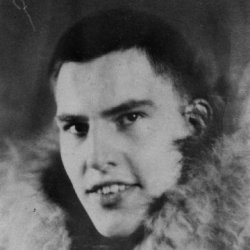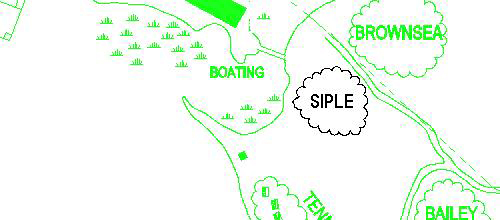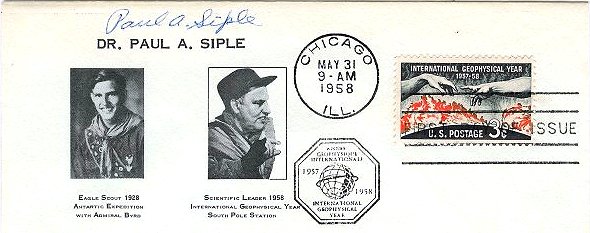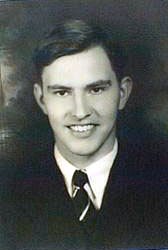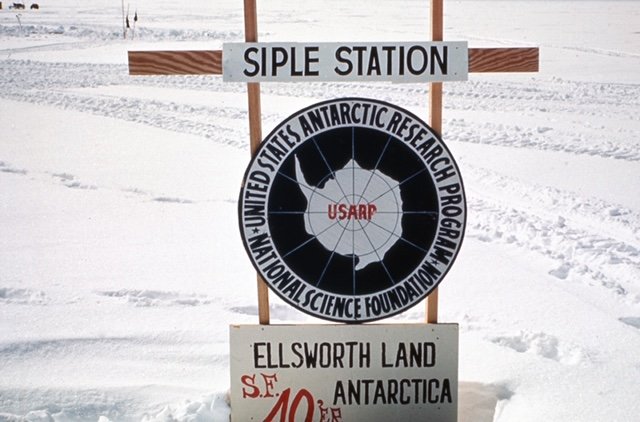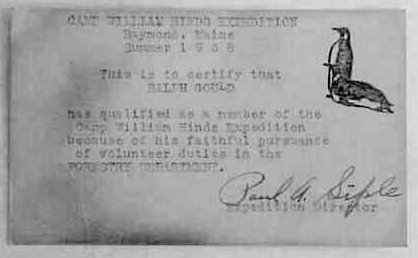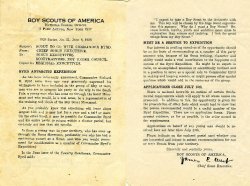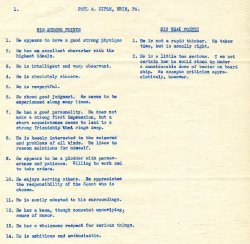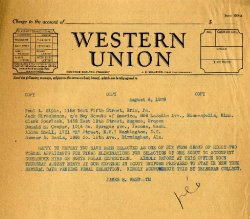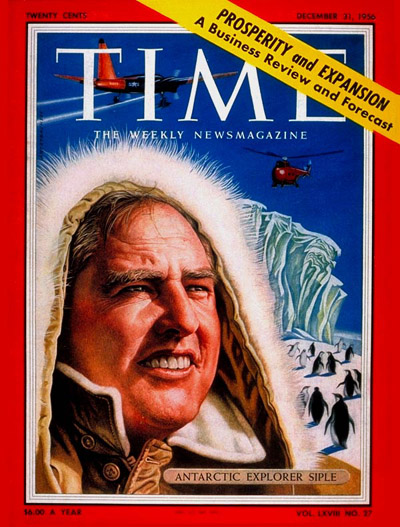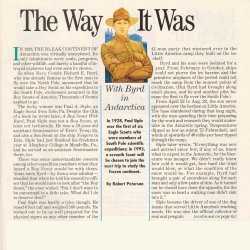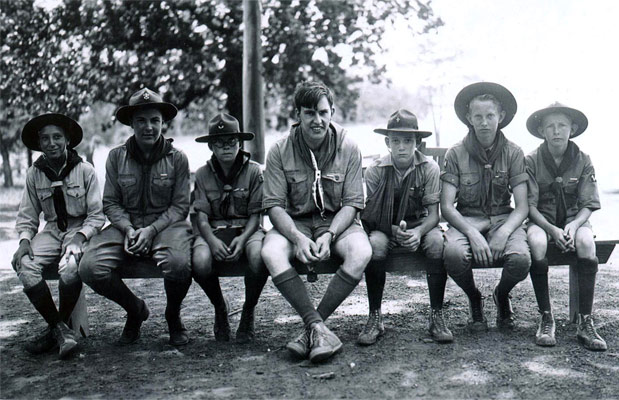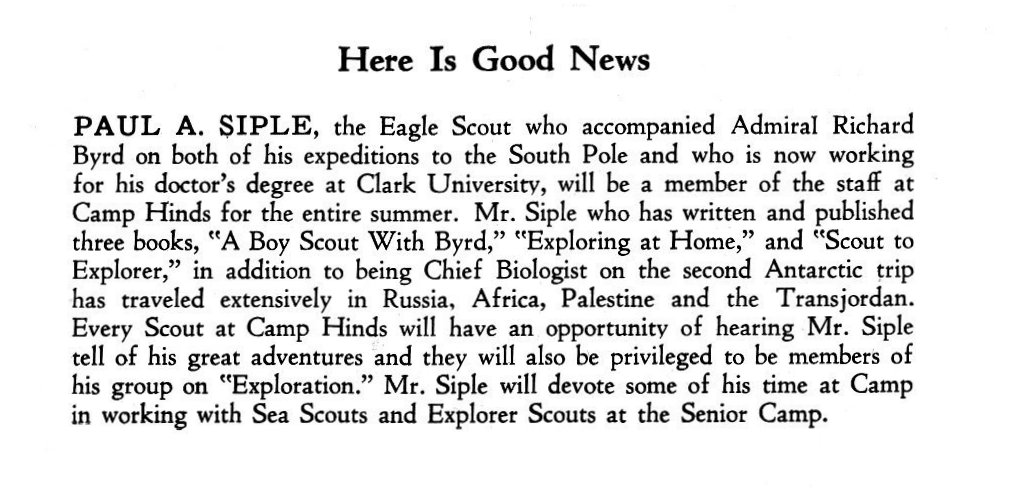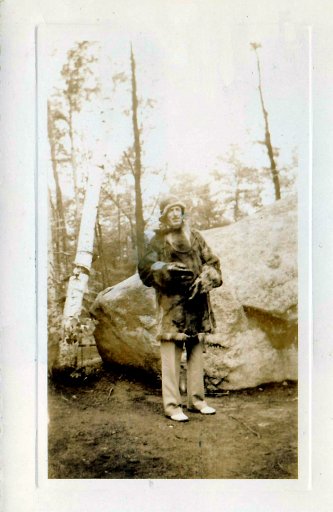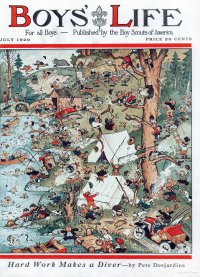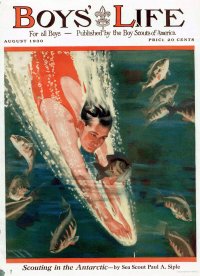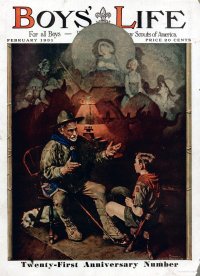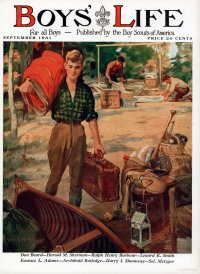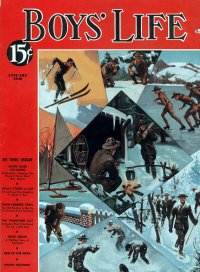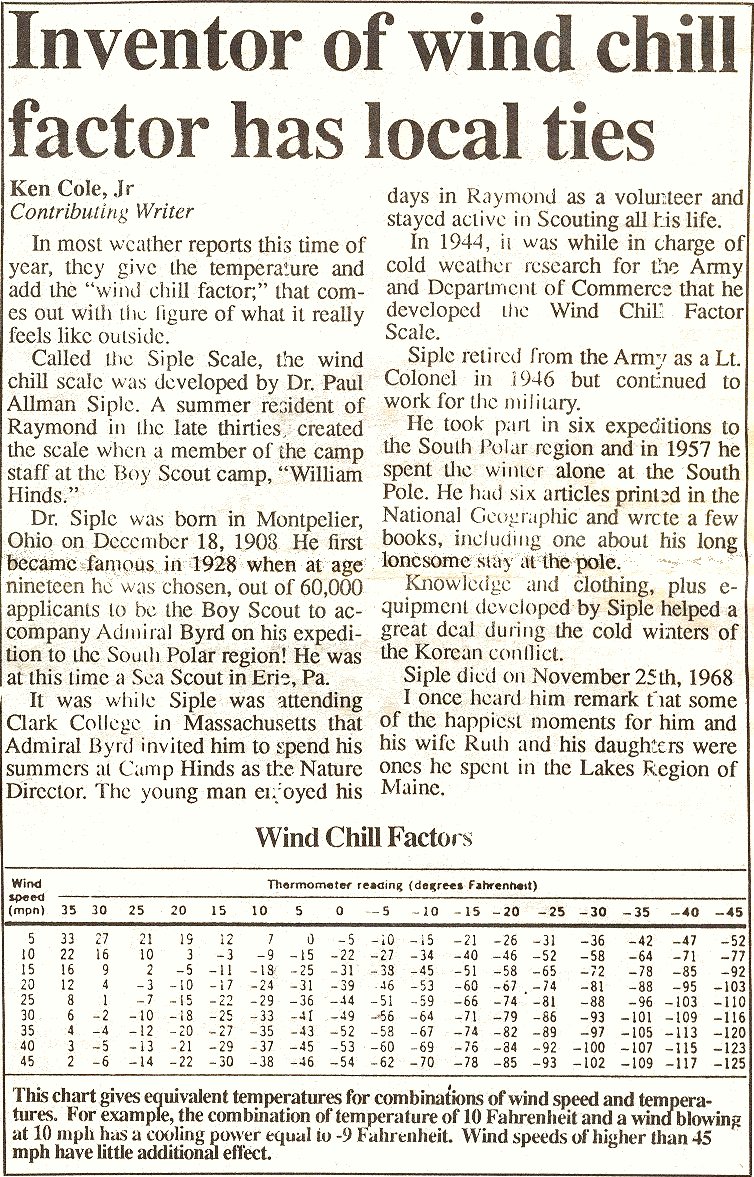| About Paul A. Siple
The name Paul Siple is not well
recognized today outside several small circles. Yet, this man once graced
the cover of Time magazine, and his major scientific accomplishment has
dominated winter weather reports for the past four decades. The well-known
term windchill, used to describe human comfort due to the impacts of cold
temperatures and wind, was coined by Paul Siple in his doctoral thesis
research on the freezing rate under breezy conditions.
Paul Siple was more than just a
research scientist, however. He was an author of four books, a renowned
polar explorer, geographer and a leading American authority on the Antarctic.
As a member of Admiral Richard Byrd's first Antarctic expedition in 1928,
he was the first Eagle Scout to travel to Antarctica. Siple spent more
than six years of his life on the Antarctic ice.
The prominent role played by Siple
in the American exploration of the Southern Continent has been acknowledged
by the names you will find on the continent's map: Siple Island (located
at 73o 39'S, 125o 00'W) with its Mount Siple; the Siple Coast (82o 00'S,
155o 00'W); and Siple Station, the United States scientific installation
in Ellsworth Land.
Paul Allen Siple was born December
18, 1908, in Montpelier, Ohio. In his second decade, his family moved to
Erie, Pennsylvania where Paul joined the Boy Scouts and took an avid interest
in the many merit badge programs, earning 60 badges by the time he was
18.
In the fall of 1927 he attended
Allegheny College in Meadville, Pennsylvania as a biology major. That summer
was spent working as a nature instructor in the Boy Scout camp with honest
intentions of returning to school for his sophomore year in September 1928,
however Eagle Scout Siple found himself on board the City of New York,
flagship for Commander Richard E. Byrd's Antarctic Expedition, as the official
representative of the Boy Scouts of America. For the next eighteen months,
Siple was either at sea or on the Antarctic continent. His association
and growing friendship with Richard E. Byrd during this expedition would
tightly intertwine their lives until the Admiral's death in 1957.
Returning to Allegheny College in
the spring of 1930, Siple focused on his studies with such intensity that
he completed three academic years in two calendar year and received his
Bachelor of Science degree in biology in 1932. But amazingly, academics
did not occupy all his time. He also found time to write two books on his
adventures: "A Boy Scout With Byrd" was published by G.P. Putnam's
Sons in the winter of 1931, followed closely by "Exploring At Home"
in September 1932.
In late 1932, Paul rewarded himself
with a backpacking trip to Europe (including the Soviet Union), Asia Minor
and northern Africa. While in Egypt early in 1933, Admiral Byrd sent word
for him to hurry back to Boston, Massachusetts. The Second Byrd Antarctic
Expedition was about to begin, and Byrd wanted Siple with him.
Siple was awarded the national Silver
Buffalo award in 1947 by the Boy Scouts of America.
~ The Weather doctor
~Wikipedia |

